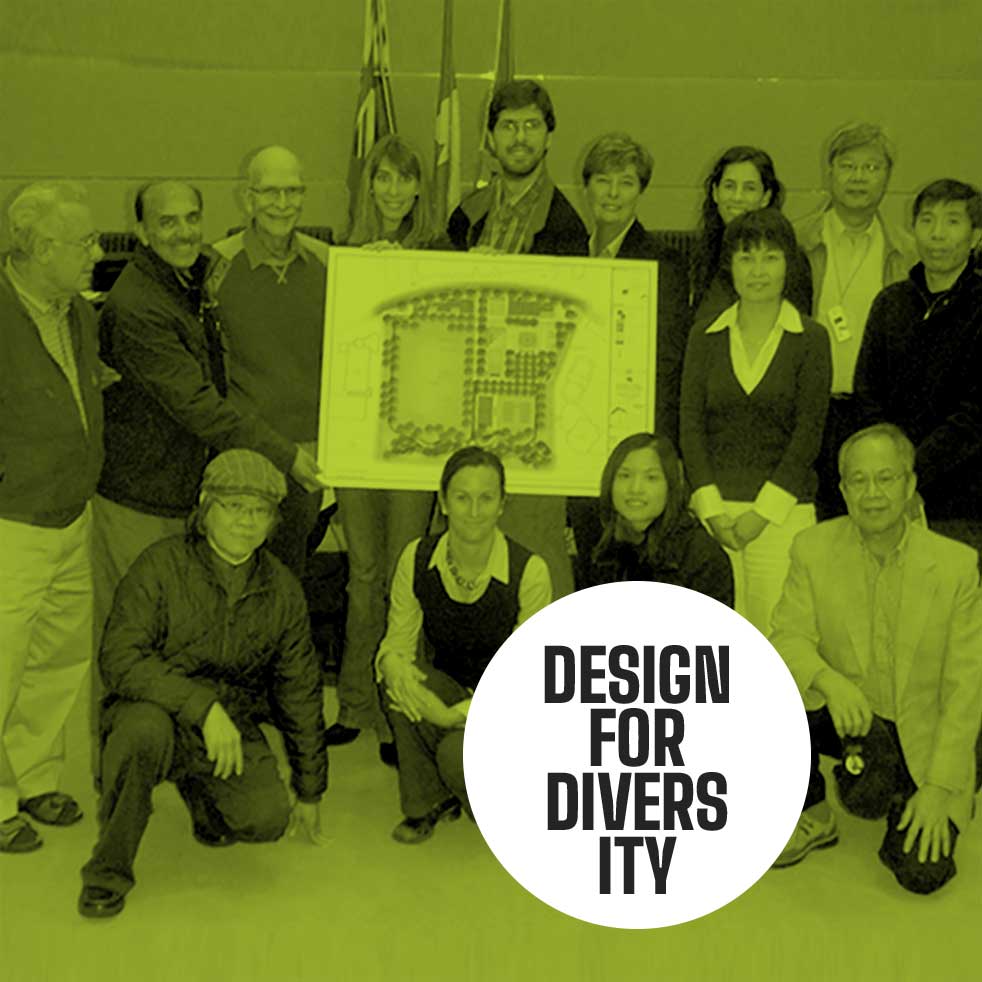
Tap
Local
Talent
by OpenCity Projects
Design for Diversity means engaging in an ongoing dialogue with users to also understand their cultures, needs and expectations of a space
Public space design should be informed by the broad range of people who will ultimately use the space and who intimately understand its context. Design for Diversity means engaging in an ongoing dialogue with users to also understand their cultures, needs and expectations of a space. Tapping local talent from the outset of a design project creates a more thoughtful process and builds consensus. By contrast, when designs are simply submitted to the community for feedback, it is a token gesture of engagement rather than a genuine, collaborative process. Design for Diversity means designing with a community, not for them.
The most well-intentioned designers and acclaimed architects have blind spots that will shape how a space functions and how a place feels for end-users. They may have years of experience but this team will fall short if they are a homogenous group designing public space for a culturally diverse group. Diversifying your team of designers will help to create a richer, more relevant design process and outcome.
In practice, the architecture firm BIG worked with the local community to help design Superkilen Park in Copenhagen. Located in one of the city’s most culturally diverse communities, the new park is a vibrant reflection of residents’ cultures. From a fountain inspired by Moroccan courtyards, to palm trees from China and a literal red square paying homage to those in Russia, the elements that define Superkilen are as diverse as its users. This unique park attracts locals and tourists from all over the world eager to see themselves reflected in the park’s design.
Our work on Leitchcroft Park’s design set a precedent in the City of Markham inviting members of the community to participate throughout the research and design process. Interviews were conducted with residents from a range of cultural backgrounds, ages and genders and all participants joined the park committee. In an ongoing conversation, the committee provided input on every aspect of the park experience including seating, navigation, activities and building materials. Our collaborative approach, and the final park design, signal that the space belongs to everyone, newcomers and long-time residents alike.